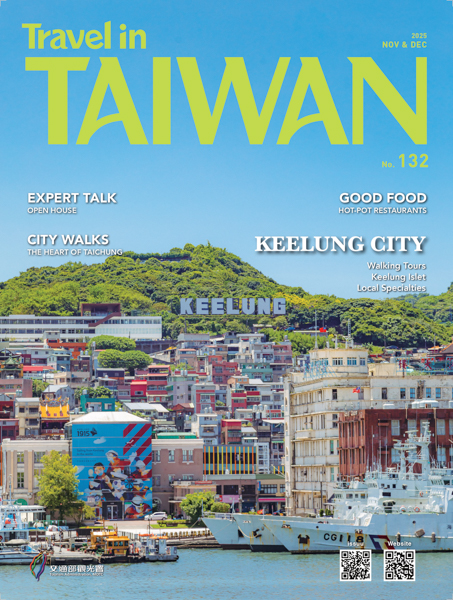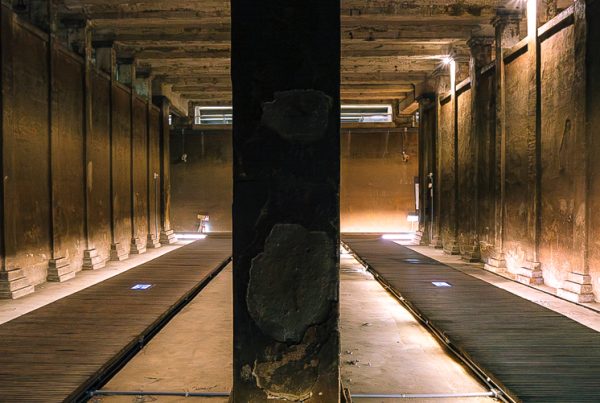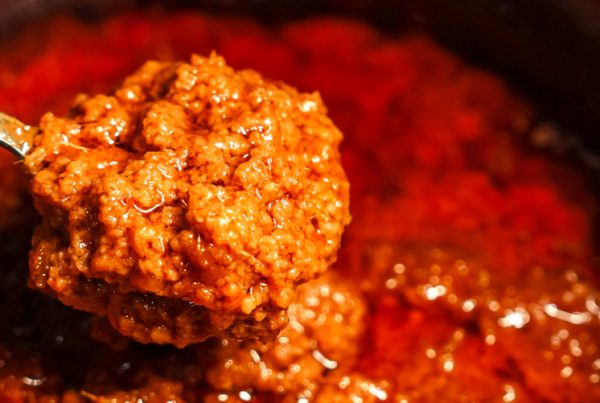Dawn Swimming, Ghost Parades, and Fire Fishing in Taiwan’s Most Underrated City
TEXT | AMI BARNES
PHOTOS | CHEN CHENG-KUO, RAY CHANG
A few years back, the harbor city of Keelung rebranded itself with a snappy new slogan: “A city full of ___.” Optimistically intended as an expression of limitless potential, jokers swiftly seized the opportunity to proffer witty suggestions for the missing word, most charitable among which was “rain.” Still, the last laugh is on those snarkers, because as you’ll discover over the following pages, there’s so much more to this rainy port city than inclement weather.
Less than an hour from central Taipei City by train, Keelung occupies a curious position on the Taiwan travel map, being simultaneously the literal first port of call for the small subset of travelers who arrive in north Taiwan by cruise ship and an afterthought for almost everyone else. Weatherworn and hardy, it bears a protective armor of sea air rust and port-city grit, but beneath this rough-around-the-edges exterior is a proud maritime community with hardworking people, fine seafood, a rich history, top-notch coffee, ghosts, colorful markets, and even more colorful traditions. Whether you surrender to its summer siren song of cool, clear waters, or the deliciously moody embrace of winter’s neon-splashed puddles, condensation-fugged windows, and fragrant plumes of steam – Keelung, it turns out, truly is a city full of ___.

Content
Keelung Walking Tours
One group that definitely knows how fascinating Keelung can be is the team at Keelung for a Walk. This locally owned and operated tour company has been offering English and Mandarin tours of Keelung’s secret spots for the past decade, to introduce people to the delights of a city often maligned by outsiders as perpetually wet and dreary. The organization runs four regular tours as well as seasonal and rotating monthly offerings covering esoteric topics that even lifelong Keelung residents may know little about. For this edition of Travel in Taiwan, we joined two of these tours, the Cultural Tour and the Ghost Festival Tour (offered during the annual Ghost Festival period).
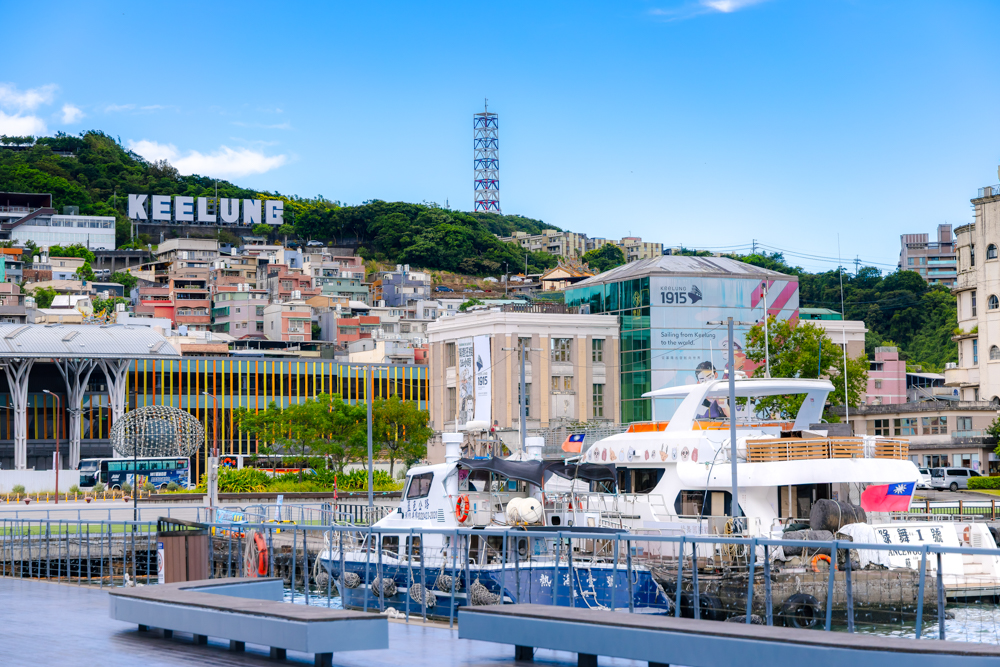
We met up with Ilun, a Keelung native and one of the company’s guides, in front of the historic Harbor Building just to the north of the railway station on the west side of the main harbor. Whipping out a map, she showed us how Keelung appeared, in the 17th century, to the Spanish settlers who were the first to survey the area (though not the first to live here; that distinction goes to the Basay Tribe of the Ketagalan indigenous people), a natural harbor sheltered between mountainous arms. Moving closer to the waterfront, she flipped through later maps, helping us trace how the landscape evolved, with wiggly inlets straightened, islands razed, contours inching incrementally closer to what we could see before us – a huge port that was once the most important ingress and egress point in all of Taiwan.




Over the next three hours, Ilun led us through the streets of her hometown, delivering a broad-ranging introduction to the diverse cultural influences that have shaped the city. Inside Chenghuang Temple, we met Keelung’s City God, and admired the generous offerings of cosmetics and jewelry left in high piles for his wife – pleas from those faithful wishing to resolve domestic troubles. In a dingy backstreet, we heard tales about the American servicemen whose hunt for liquor, ladies, and late-night liveliness during rest and recuperation breaks from Vietnam postings spawned a whole industry (and a small cohort of dual-heritage babies). We paused briefly beside Kanziding Fish Market (location of Keelung for a Walk’s Night Market Tour), then skipped over railway tracks to explore an old bomb shelter now serving a secondary purpose as a residents’ shortcut.





Our cultural tour concluded at the Ren’ai Market. This gargantuan two-story covered shopping area spans an entire city block and attends to every conceivable need of daily life. On the ground floor is a wet market, where Ilun snagged us some Taiwan-style tempura snacks (chewy fried fishpaste cakes), while the top floor is filled with eateries (the sushi is apparently excellent), cafés, and hair salons transported straight from the 1970s.

The second time we met was a few days later. Specifically, on the thirteenth day of the seventh lunar month – close to the zenith of the city’s annual Midsummer Ghost Month festivities – and we were there to observe the Dipper Lantern Parade.
Ghost Month, or Ghost Festival, is an annual event spanning the entire seventh lunar month (Aug. 23 – Sept. 21 in 2025). It has roots in both Buddhism and Daoism, stretching back thousands of years to a time when appealing to gods and ghosts was the only recourse communities had for dealing with their anxieties.
Keelung for a Walk | 雨都漫步
Add: Keelung Memory Market : 1F., No. 25-22, Ln. 6, Liumingchuan Rd., Ren’ai Dist., Keelung City
(雨都好室: 基隆市仁愛區劉銘傳路6巷25之22號1樓)
Tel: 0968-607-676
Website: keelung-for-a-walk.com
On the first day of the month, the gates to the underworld open, and until they’re resealed on the 30th, hungry ghosts are thought to maraud unseen through the realm of the living, bringing all kinds of misfortune. From unexplained ailments and nightmares to career stagnation and family discord, every ill is blamed on these lost souls, and to live among a Chinese-speaking community during this period is to endure a constant stream of well-meaning admonishments from elders. No swimming in streams, lakes, or oceans (water spirits will tug at your ankles as they vie to seize replacement souls). Don’t leave your washing hanging up at night (spectral fashionistas may see it as an invitation to snag some new swag). Never call them “ghosts” (the polite term is “good brothers” or “good sisters”). These aren’t just advised out of tradition. For many, the unease is genuine.

During this time, people sublimate their fear of the restless and improper dead roaming about in rituals and mass oblations – a practice known as pudu. Throughout Taiwan, communal altars in neighborhoods and outside office buildings groan under the weight of offerings put out to appease hungry spirits and maintain social harmony. Keelung, however, goes to extra lengths with its observances.
Gathered in Keelung Memory Market – a stall inside the Huilong Market, which has beenturned into an exhibition space by Keelung for a Walk – we learned that the origins of Keelung’s oversized Ghost Month festivities trace back to the 1850s, when a particularly violent historical feud between competing groups of immigrants from the Quanzhou and Zhangzhou areas in China led to over 100 deaths.
To avoid escalating bloodshed, a pact was drawn up in 1855 limiting the factions to settling their differences by battling with religious performances. Rival clans took turns attending to arrangements, and – until the subduing effect of World War II led to it being scaled back – the event continually grew in size and extravagance as hosts competed to outdo the activities of the year before. Today’s visitors, however, will likely find it hard to imagine how the month-long calendar of events could possibly have been any grander.
The Dipper Lantern Parade is one of two processions that snake through the city’s streets each year (the second, larger procession is held the following evening and culminates in the release of water lanterns at Badouzi Tourist Fishing Harbor). If you’ve ever experienced the thrill of being a child at a carnival, you’ll recognize the energy. Tightly coiled excitement pulses through the air, all bright lights and clashing, off-kilter beats. Electrified floats adorned with flashing lights and animatronic contraptions blare pounding electro-pop. Beiguan orchestras march on foot, their suona horns reedy and ear-splitting en masse, while the sounds emanating from huge gongs reverberate through your chest. Around this chaos, there’s much shouting from elderly gentlemen in the guise of important organizing, shrill whistles, and gesturing from harried police trying to manage the crowds. It is gloriously overstimulating.


Ilun led us through and around the parade, dipping in to see the whole thing kicked off with firecrackers, and pausing to watch a Beiguan battle between rivaling clans (it was the gentlest battle I’ve ever watched – two teams of horn-blowing grandpas in straw trilbies and sunglasses faced off against each other). The day’s festivities concluded in Qing’an Temple, where huge lanterns were carried inside and placed beside an altar dedicated to the goddess Mazu. The lanterns – ornate wooden contraptions, many of which are almost as old as the parade itself – are so heavy and unwieldy that most need to be broken into three pieces to be transported through the courtyard and over the temple’s threshold. Watching the teams work together to maneuver their clans’ ancient lanterns into place, it struck me how impressive it was that a celebration so full of beauty and teamwork had been born from such fractious beginnings.



Yacht Tour
Given Keelung’s intimate relationship with the ocean, it’s hardly surprising that fishing is a keystone of the local economy. Harbors big and small break up the coastline, fleets of lantern-rigged vessels stream out at dusk and return, catch-laden, in the wee hours, and several companies offer excursions for visitors keen to sample the fruitful waters of Keelung’s piscine scene. We booked a sunset sailing with Jinlong Yacht Club (see next article for a trip to Keelung Islet with the same company), which, for NT$1,800 per person, took us on a combined fishing expedition and exploration of the region’s sulfuric fire fishing heritage. (Fire fishing tours are available June to September, while fishing-only tours are available April through October. Equipment provided.)
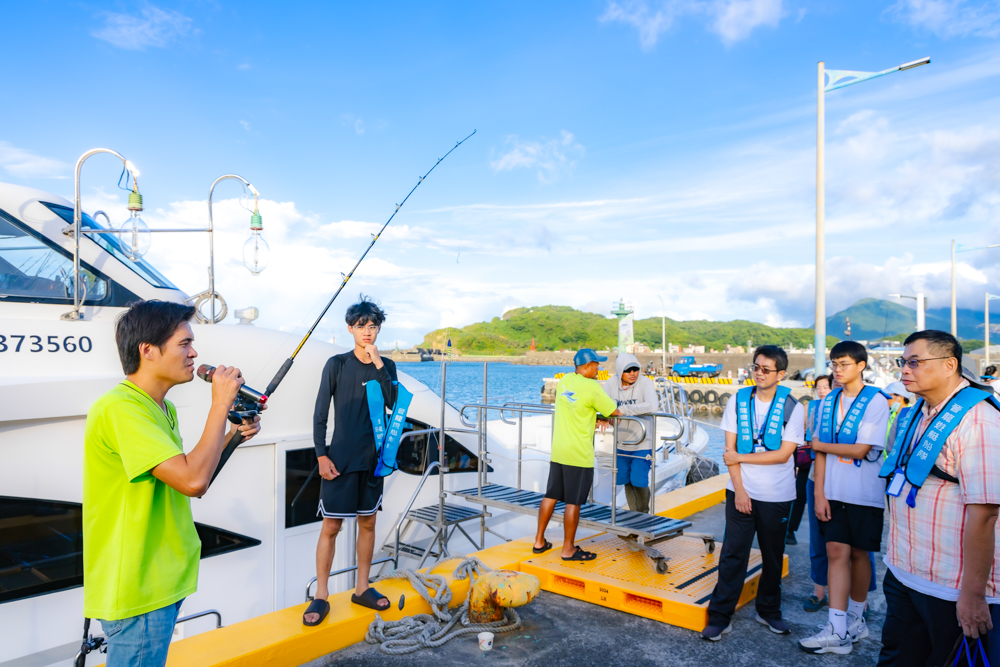
Departing Badouzi Tourist Fishing Harbor at 5:30pm, we were treated to an onboard seafood feast before heading in search of our fishing grounds – around us, the day’s dying sun painting bold pinks onto the clouds and setting the mountain town of Jiufen aglitter. The waves were noticeably stronger 15 minutes out, so once the engines were cut, a para-anchor was deployed, letting the prow drift windwards to minimize rolling, and a concentrated hush fell over the group. The gentle swooshing of waves was punctuated only by whirring fishing reels and the occasional high-pitched pips of land-bound terns – blurred smudges of white against the gathering murk.
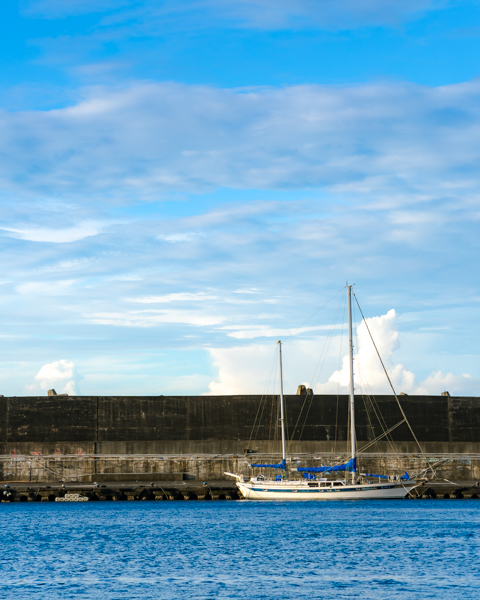
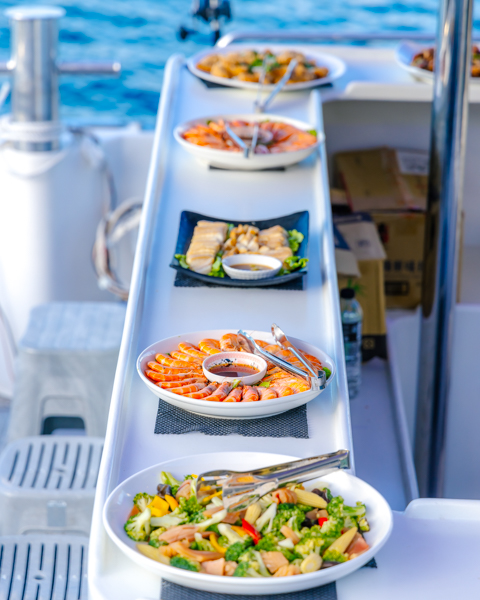


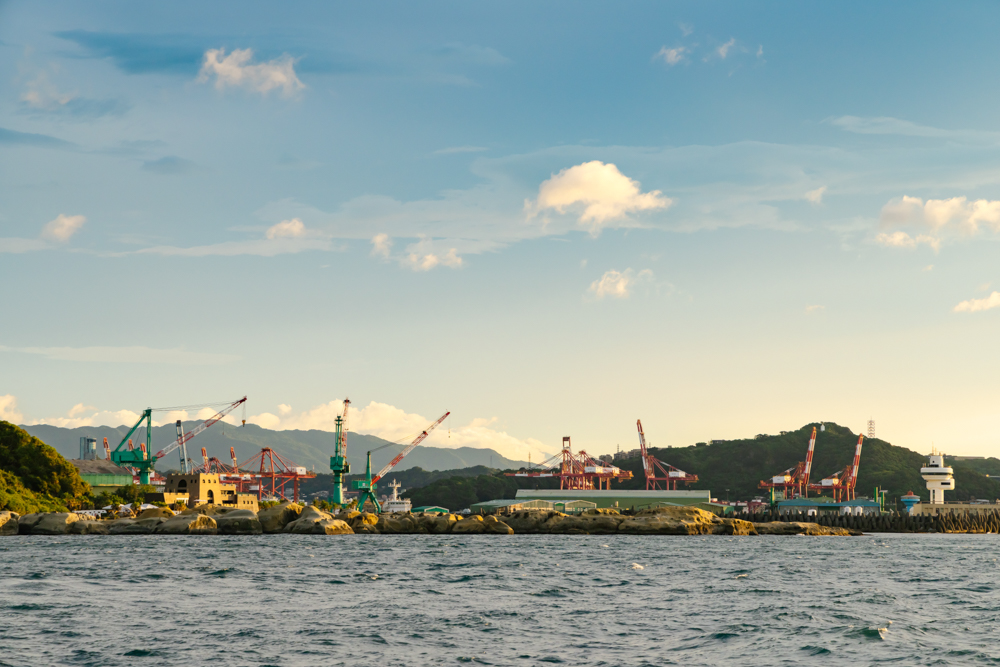
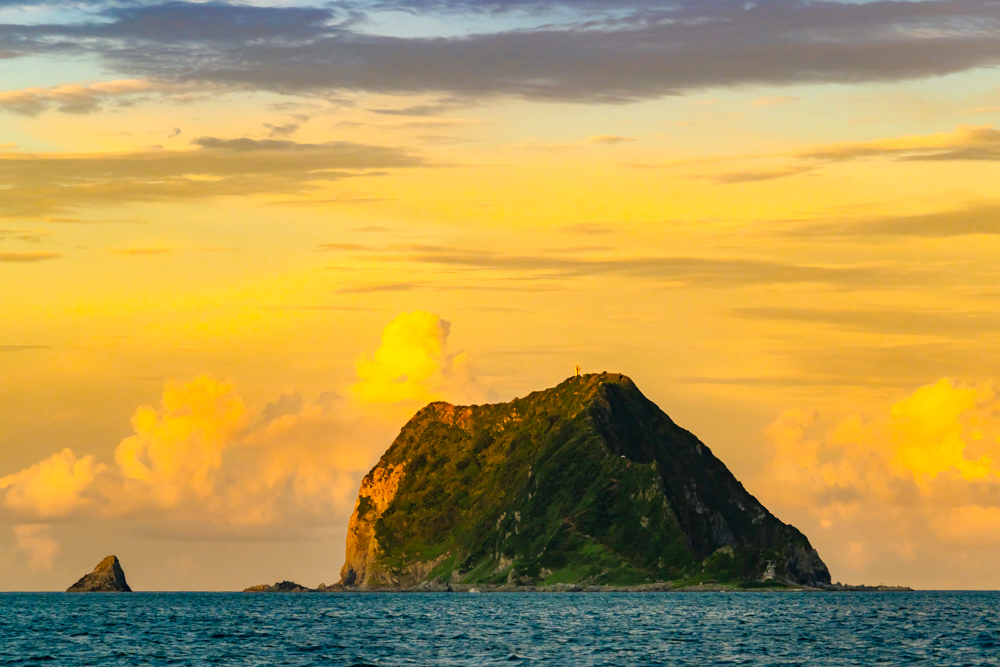
After 10 minutes with no bites, the skipper began giving depth updates using his radar, “They’re there. Twenty-five meters down, swimming back and forth.” Twice, an excitable cry went up, “I’ve got something!” But after careful reeling, it was discovered – cue much mirth – all that had been hooked was another line. Depending on the season, you might catch squid, mackerel scad, or Pacific cutlassfish. However, someone had clearly neglected to entreat Mazu (the preferred deity of seafaring types) for assistance, because when the time came to set off for the fire fishing demonstration, not a single fish had been netted.

Heading northwards, we sailed around the Yehliu Geopark peninsula to the sheltered bay just south of Jinshan town. In summer, these shallow waters attract schools of Japanese sardinella, and for generations the region’s anglers have employed a visually spectacular technique that involves luring phototactic fish with fire.
As with many traditions, the origins are somewhat nebulous. Perhaps indigenous fisherfolk taught the technique to Han settlers, or maybe the incomers brought it with them. Even the English name, sulfuric fire fishing, seems to have morphed in translation, since the fire is actually generated by igniting acetylene gas (created by adding water to calcium carbide), not sulfur. Leaving such quibbles aside, this historic, only-used-in-Taiwan technique was fascinating to observe.
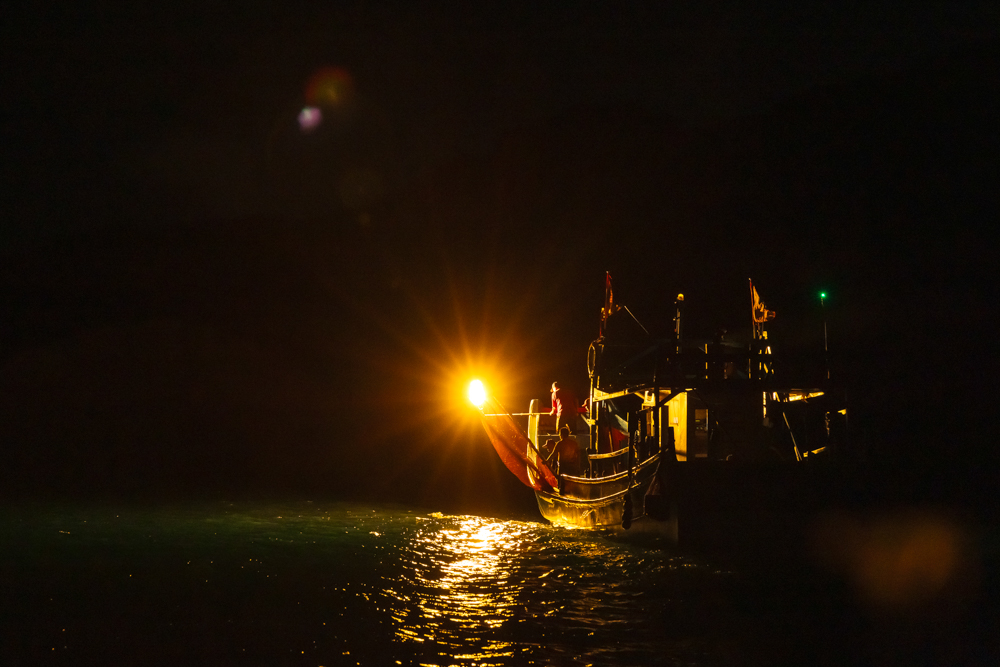
First, a thin, sibilant whoosh went up, then a heavy whump, as if someone had walloped a mattress, and a meter-high flame blazed into life. At first, all I saw was a dazzling pool of light illuminating the shifting water, then suddenly, tiny silver fish were breaching the surface, hurling themselves at the midnight sun with reckless abandon. On deck, the fire warden swept his torch port-side, guiding the net-dippers who were awaiting the perfect moment to thrust their unwieldy two-man contraption into the shoal. Before they had time to haul the catch onboard, the flame blinked out, plunging the scene into a darkness even deeper than before. It was a hypnotic sight.
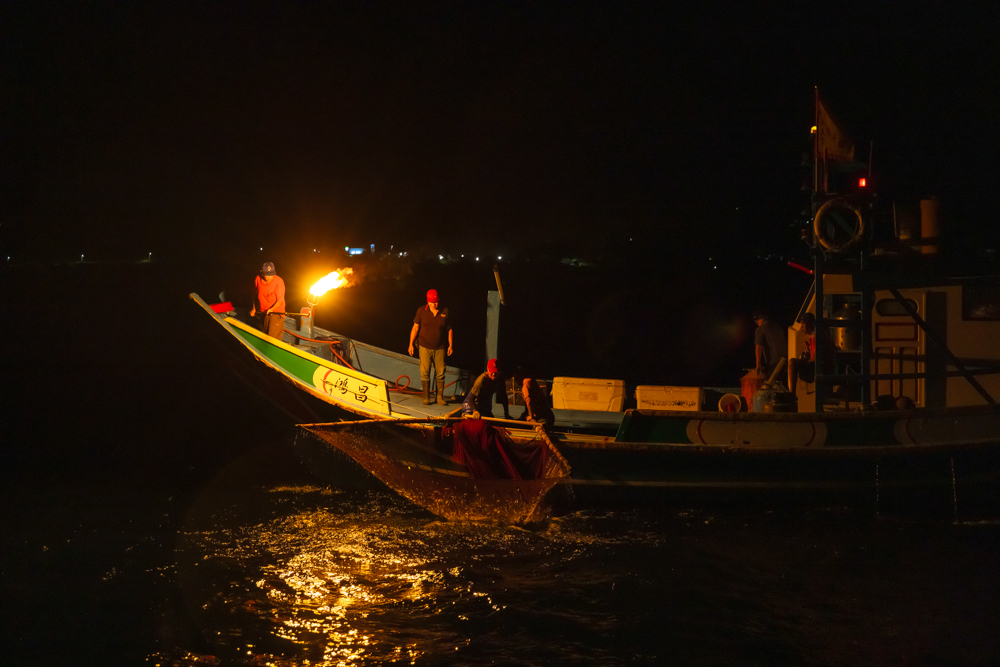
We watched, following at a distance, for an hour, and when it was time to head back to dry land I was left feeling strangely, unexpectedly moved. There is something humbling about witnessing ancestral ingenuity from a time when we were perhaps slightly better at preserving the ecological balance.
Jin Long Yacht | 晉龍遊艇船隊
Add: Badouzi Tourist Fishing Harbor; No. 211, Beining Rd., Zhongshan District, Keelung City
(八斗子漁港; 基隆市中正區北寧路211號)
Tel: 0918-373-560, 0965-829-560
Website: jinlong-yacht.com.tw
Waimushan
If you’re hoping to get a sense of how Keelung locals spend their free time, look no further than Waimushan Lovers Lake Coastal Boulevard in the Waimushan Seaside Scenic Area. Extending east to Dawulun White Sand Beach and west to Waimushan Fishing Harbor and Haixing Swimming Pool, this 3-kilometer stretch of coastal road is where Keelung residents come to stroll, swim, run, snorkel, paddleboard, sing, sip coffee, and walk their pet turtles (no, really).
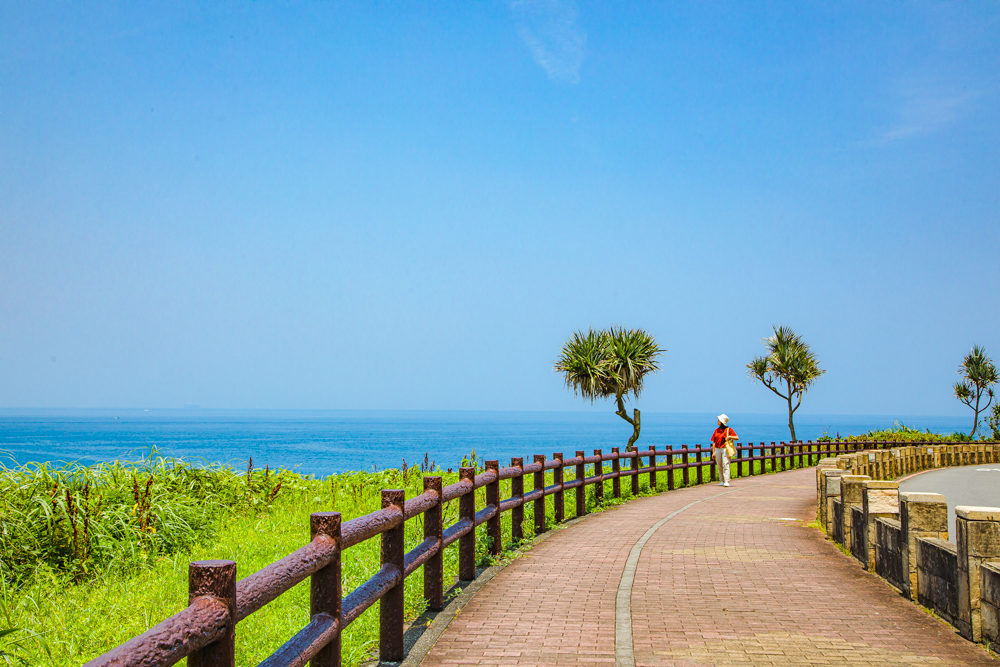

To get there, take a taxi or the No. 310 bus from Keelung Bus Station and commence your wanderings at Dawulun’s golden-sand beach. A family favorite, lifeguards patrol this horn-shaped cove on weekends, and a healthy ecosystem of parasol rentals, pay-to-shower places, and snack shops caters to the crowds. Alternatively, sand shunners could kick-start their coastal adventures with a jaunt up Haixing Trail. Steps climb from the beach to Lovers Lake and the banyan-wrapped stone edifice of Dawulun Fort. The imposing hilltop compound – one of several standing sentinel over Keelung – dates to the 1820s and was expanded by several subsequent administrations before settling into its current role as a backdrop for hiking photos.
Back on the coastal road, a wide paved promenade skirts the water’s edge. Anglers – human and avian – perch on wave-dashed rocks waiting for luck to bite, and on weekends, the occupants of roadside carparks look like they’ve spilled straight from the pages of a Taiwan-coded van life brochure – there are portable cinemas, karaoke bars, and compact kitchens replete with fridge and rice cooker.
Haixing Swimming Pool sits at the eastern end of Lovers Lake Coastal Boulevard. On a separate recent visit to this free facility, I arrived early (or so I thought) at 7am, only to be greeted by the vanguard dawn dippers emerging after completing their swim, saltwater footprints marking their procession from shore to shower block. Midweek, there wasn’t much variation in swimmer demographics. The vast majority seemed to belong to the retiree class, but while the age range remained consistent, there was a stark contrast between the unofficial uniform for men and women. The former all seemed to be rocking nothing but goggles and sun-faded budgie smugglers, while the latter were clad head-to-toe – literally – in sunhats, facekinis, full-body wetsuits, and swim shoes. Many also toted open-water tow floats, especially those venturing further out.

Three zones help separate the small fry from the selkies. There’s an enclosed concrete pool for learners and kids, an intermediate area connected to the ocean at one end, and – beyond a string of warning buoys – open water where swimmers bust out impressive 1,000-meter laps around a small skerry. Beneath the waves, snorkelers will find themselves eye-to-eye with all kinds of weird and wonderful denizens of the not-so-deep. Bright blue neon damselfish and the zebra-striped Indo-Pacific sergeants are all but guaranteed sightings. A glance at the spot on the citizen science app, iNaturalist, shows a rich underwater world.
Admittedly, with the Hsieh-Ho Power Plant’s smokestacks and a pair of squat, cylindrical oil tanks looming over the pool, it might not seem the most salubrious spot for a soak, but don’t worry, when you stop focusing on all that concrete your attention drifts to the rippling dance of light on the surface, the way waves lift and carry your body, the sun-bronzed, water-sculpted glisten of the regulars’ muscles, the sweet ocean scent clinging to your skin, and the rhythmic white-noise dialogue between sea and shore.
Heping Island
On the eastern lip of Keelung Port lies Zhengbin Fishing Harbor, another of the city’s hangout spots – this one much better known among out-of-towners. In the past decade, the harbor and adjacent Heping Island have cemented their roles on the Keelung travel itinerary, the fishing port as a place for photo check-ins thanks to the rainbow houses beautifying the waterfront’s southern edge, and the island as a quiet spot for admiring the scenery and taking a dip.

Walk up Zhengbin Road, away from the colorful row of houses, across Bachimen channel, and you’ll soon find yourself on the rich historical palimpsest that is Heping Island. Embedded literally and figuratively in the land are traces of habitation spanning millennia. Archaeological digs have unearthed prehistoric stone tools and 300-year-old glass earrings, while a congregation of long-deceased Spanish missionaries has lain entombed beneath a carpark for years. The tiny Fanzi Cave holds memories of Dutch graffiti dating to the 1660s, and along the shore sit odd formations christened “tatami mat rocks” by Japanese Ryukyuan fishermen who drifted here chasing abundant catches. Even the island’s present-day name, meaning “peace,” contains a historical nugget. Formerly known as Sheliao Island, it was renamed following a massacre – part of the wave of atrocities that swept the land in the wake of the bloody 228 Incident in 1947 that saw shipyard workers and fishermen killed and disappeared. (If you’re interested in learning more, Keelung for a Walk also conducts tours of Heping Island.)
A 10-minute stroll from Heping Bridge brings you to the gates of Heping Island Geopark (NT$120 entry for adults). The real draw here is the trio of ocean-fed pools – main, pet, and paddling – that rise and fall with the waves, reaching depths of up to 2.5 meters at high tide. There’s also an artificial beach with a stream where kids can dig and work on their sand-based architectural prowess. The pools are open year-round, and hardy swimmers brave the waters even in the winter, though with February’s water temperatures hovering around 18°C, my UK family members would scoff at calling them hardy.

As for practicalities, the dress code seems looser than that of normal Taiwan swimming pools. There’s no mandatory hat-wearing policy, and you are able to wear T-shirts to keep your skin protected from the sun. That said, water shoes are required for entry to the pools, and although this isn’t strictly enforced, trust me – barnacle-encrusted concrete and tender toes should never meet. The bright changing rooms offer 3-minute cold showers for NT$10 (hot water costs extra), while the visitor center rents everything from lockers to beach umbrellas and even a beach-going wheelchair.

If you haven’t brought your swimwear, not to worry, there’s still plenty to enjoy. Above the airy visitor center’s gift shop and exhibition space are a couple of cafés. My pick is Love Pin, which playfully incorporates maritime themes and ingredients into its menu of drinks and light snacks (think sea lettuce cheesecake and drinks made with agar and sea grapes). There’s also a short trail running around the headland with views overlooking the aforementioned Fanzi Cave and tatami mat rocks (aka tofu rocks), and if you visit between May and September, you can witness nature’s artwork by joining a tour of Alabao Bay’s weird and wonderful rock formations.




